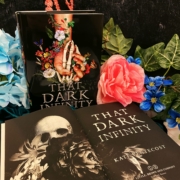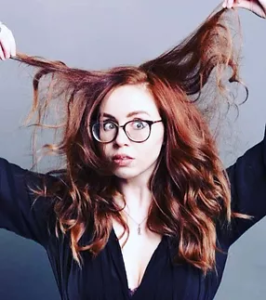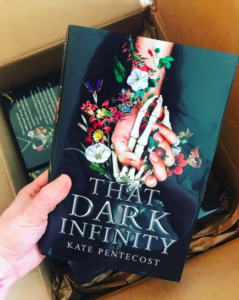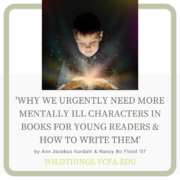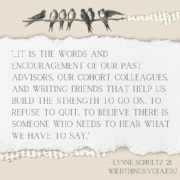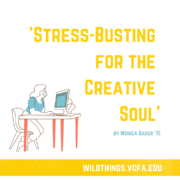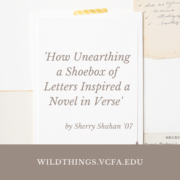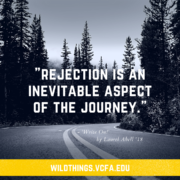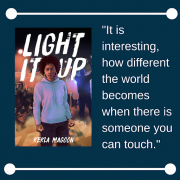The Hike to Home – Jess Rinker (’14) on her Upcoming Release!
VCFA WCYA (Summer ’14) Alum Jess Rinker is set to release her fifth book on July 5th, 2022! Get the inside scoop on her middle grade adventure, The Hike to Home, here!
1. Tell us a little about The Hike to Home in your own words.
The Hike to Home is about a girl who sets out to find her own adventure. It was sold on proposal, and then switched imprints when my initial imprint closed. When it changed hands, it also changed editors and vision, which turned out to be a wonderful thing because my new editor really pushed me hard in developing my idea into a more complex, heartfelt story. But what didn’t change was what I knew I wanted to write about from the beginning: a story about kids hiking the AT on their own, an unconventional mother/daughter relationship that was still full of love, and a girl who knew a ton about nature but not so much about kids her own age. There are a lot of autobiographical elements in this story.
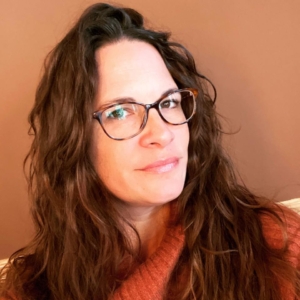
2. Tell us about your characters. Were they inspired by anyone you know or knew growing up?
Lin, the protagonist, is based on me, but with major changes in life experience/situations. We both grew up somewhat isolated from our peers and pop culture, but for very different reasons. Learning the names of flora and fauna everywhere is the constant that binds us. As a young person I devoured wildlife identification books and I’ve always had some kind of wonder and satisfaction at knowing the names of the little creepy crawlies as well as big beautiful blooms and more majestic creatures. I also had a TON of freedom as a kid to explore the woods, so I really wanted these kids to find adventure in their backyard like I used to. Tinsley is based largely on my expressive, creative daughter. And Leo really represents the smart, sweet boys I’ve known in my life, the boyhood that exists before it’s crushed by toxicity.
3. Finding a castle in the woods sounds like a great adventure. What motivates these characters to try to look for it? What does it symbolize for them? What did it symbolize for you (if anything?)
Lin is desperate for a grand adventure like she’s used to having, so when she lands in NJ she thinks there can’t possibly be anything exciting there, which just compounds her grief of missing her mom who was always her adventuring partner. (Mom isn’t gone, just away for a bit) When she makes new friends and learns of the legend of the castle, she thinks it’s exactly the kind of adventure Mom would have taken her on, so she sets out to prove she can do it herself, with a bit of revenge motivation. Besides, it’s just New Jersey, what could go wrong? The other two are not used to having the same kind of adventures or freedom that Lin has had, so they are pretty enchanted by her, which leads them all into some sketchy situations.
I think the castle mostly represents any goal or dream, honestly. Without castles, we don’t climb mountains. Without climbing mountains, we don’t know how strong we really are.
4. What draws you to middle grade as an age group?
Initially I wasn’t drawn to it, to be honest. I didn’t think I could get myself in that mindset because my own middle grade years were pretty fraught with chaos and dysfunction, and so when I channel myself back that’s where my brain first lands. It takes a lot of work to sift through that to get to the heart of a twelve/thirteen year old. It’s a wonderful age and now that I have landed in that category, I really love it. It’s become easier to separate my own traumas, and sometimes cynical outlook, and focus on the beauty of that age, how it straddles this amazing brink of childhood and adolescence where kids are still imaginative and dreamy, and yet becoming much more responsible and self-aware. I get to write stories that I would have read at that age–little escapes and adventures with a bit of life-lessons and hard knocks. There are resounding themes of friendship, feminism, and allowing girls to explore their world in all my middle grades books, and it’s really fun writing to those themes without knocking my readers over the head with didactic messages.
5. What were some of the things that inspired you to write this story?
Honestly, I wanted to write an adventure story that was set in an unexpected place–New Jersey. Most people don’t think of New Jersey as having particularly natural topography, but it is the Garden State for a reason! There might only be a small portion of it preserved, but that portion is completely gorgeous. And a small section of the Appalachian Trail does go through the northwest corner so it’s based on a real area. I wanted to showcase the small, sweet Delaware river towns I have lived in (Newbridge is a fictional amalgamation of them) along with the vast wildlife and beauty that might not be consistent with some people’s ideas of New Jersey.
I also wanted to show a family that looks very different from the nuclear example that tends to get put on a pedestal. Although Lin’s family is somewhat nuclear, they don’t live suburban, stationary lives. They are on the road almost all the time, Lin has never attended public school, and at the start of this story, her mom has gone away for a year, which Lin is very unhappy about initially. A big part of the story is Lin coming to an understanding that her family can change how it looks, but still be close and loving, and that dependable friends can also become family. It doesn’t all have to rest on Mom’s shoulders!
6. Tell us something cool about yourself! What have you done recently that you’re proud of?
Well, no big adventures for me lately, but I did recently learn how to blow glass and make actual functioning pieces. I’m working for a brand new glass studio in Wardensville, West Virginia, and learning the craft was part of the perks of onboarding. The fact you can walk into the shop, and come out with a vase is mind boggling. I never thought it was something just anyone could do, but anyone can do it! Doesn’t mean you’ll have a beautiful piece, but you can have a working piece.
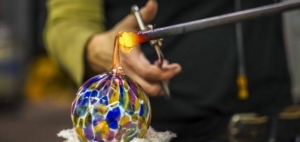
A professional glass blower creates a beautiful work of art in Mallorca.
The really cool thing is that it’s such a different creative process than writing in that you cannot be in your own head. You must be fully present, aware of your surroundings, and in the moment. There’s most definitely a mindfulness that’s required to work with glass, something I don’t stretch that often because I’m usually on a computer. Anyway, it’s really fun, and challenging, and I’m super excited to be working there and to witness other people learn the trade.
7. Do you have a favorite urban (or rural) legend? If so, what is it?
I think the castle legend is my favorite. I mean, I made it up for this story, but it’s based on real abandoned castles which exist on the east coast, often Scottish or Irish replicas and usually built by rich white men, maybe trying to duplicate home? I’m not sure. But I love the idea of trekking through the woods in search of ruins and in fact this story initially sparked when my husband and I once did exactly that. We literally hunted down a castle through small-time explorer’s blogs and Google earth, and it was SO FUN. But I can’t disclose the castle name or location because technically it was trespassing. (Shhh!) But here’s a glimpse:
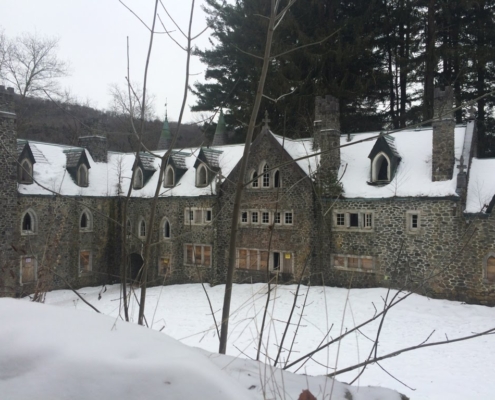
(Shhh!)
8. What area of the world would you most like to explore?
I would love to visit a lot of places, but lately the Scottish Highlands have been on my mind. I pretty recently found out I’m nearly half Scottish, which was surprising because I think I look more like my Italian family and have mostly identified with them. But I’ve also always lived on the Appalachian trail, be it in NJ, PA or now in WV, which isn’t actually on the trail, but certainly Appalachian, and where Scotch Irish settled. I’ve learned so much about the history here, and Appalachian history is my own history, so now I’m dreaming of going to the origin of that ancestry. This book explores a teeny-tiny bit of that, with the legendary castle and the creation of the Appalachian mountains, but I don’t want to give too much away…
9. Do you think the physical act of exploration enriches the childhood experience or may be a necessary part of the coming of age experience?
100%. Whether a child lives in rural and small town areas as I have, or urban, or anything in between, a little bit of freedom goes a long way. I worry that that freedom gets harder and harder for parents to grant because it seems like we live in scarier times than the 80’s when I was growing up. When my own children were growing up, I tried to give them as much freedom as I could but it was definitely a lot less than what I had. Freedom also means sometimes taking away things that kids enjoy, which is sometimes challenging. For example when my kids were little I would unsubscribe from cable service every summer to help enforce more outside time. (Cable? God that makes me sound old) But they became so used to it, it was never an issue, and all three of them have a strong appreciation for the natural world now, which makes me very happy. I think it’s really important to not always hold the reins too tightly and to push your kids towards self-entertainment.
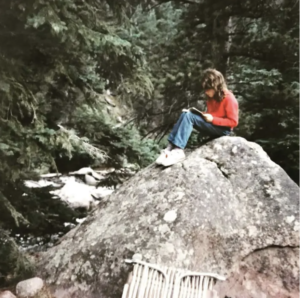
10. As someone who has moved around a lot, experienced the loss of a home to a fire, and finally settled in a rural area surrounded by forest, what do you hope your readers learn about the meaning of home?
Home is, and always has been for me, the people I am with. I have moved dozens of times in my life, so I have never become overly attached to a building or even a place (although NJ has a special hold on my heart), but my true home rests in my children and my life-partner (even when that partner has changed) and my closest girlfriends. I’d like for young readers to know that surrounding yourself with the right people is what builds a real family and home. It doesn’t have to look like anyone else’s life, it just needs to be what you need/want. And I think the idea that “adventure is everywhere” echoes this in the sense that we can find wonder and mystery anywhere, if we look for it. It doesn’t have to be some grand world exploration, it can literally be in your backyard, or small town, or city.
You can find more writing from Jess at www.jessrinker.com!

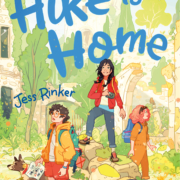
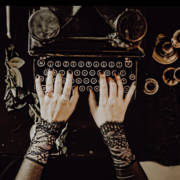
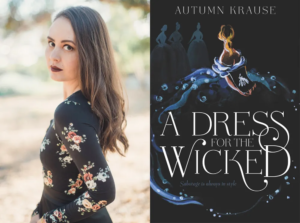
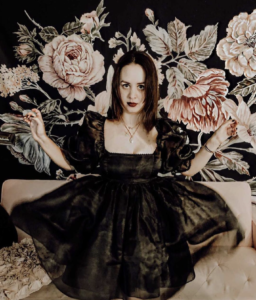
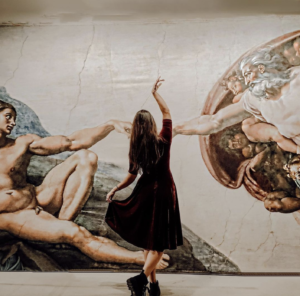
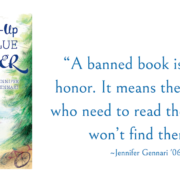
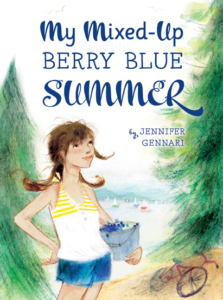 I have a few words, too, that I would remove from my debut,
I have a few words, too, that I would remove from my debut, 